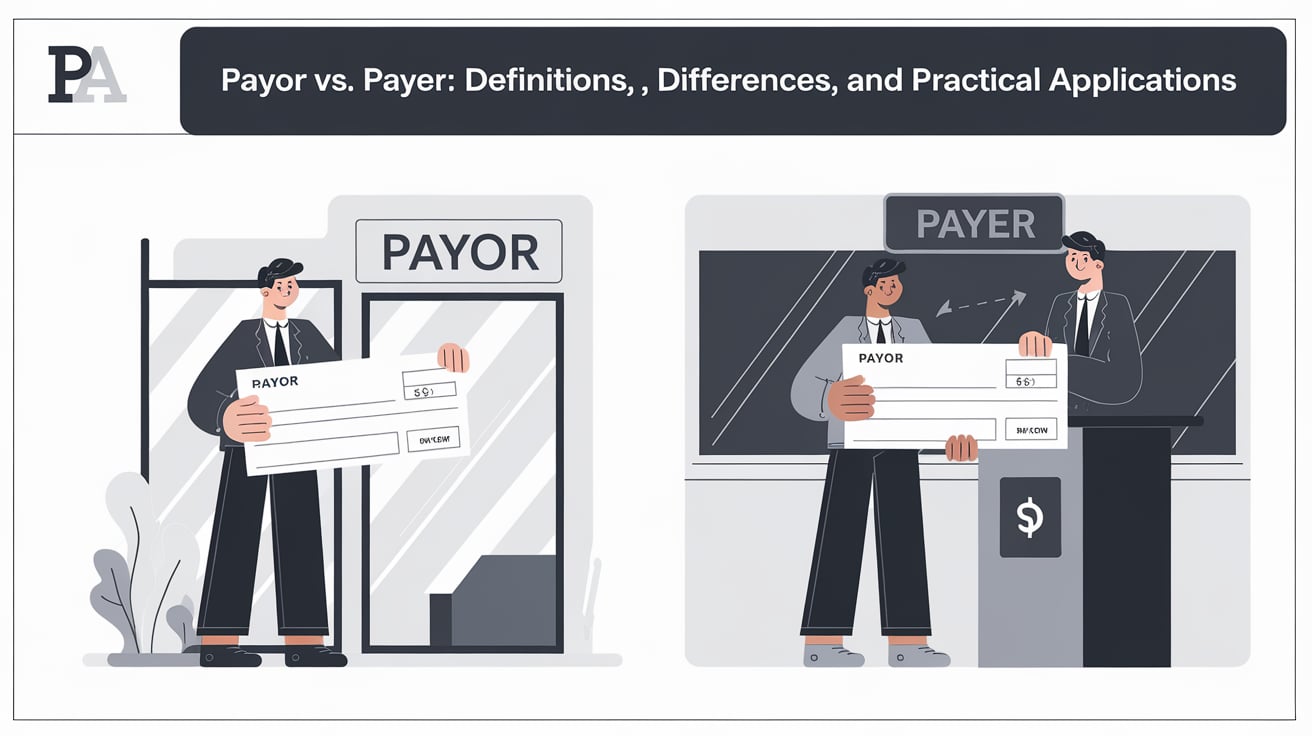Why Financial and Legal Terminology Matters
Financial and legal terminology can be confusing, yet understanding it is crucial for clear communication. Two words that often cause confusion are payor and payer. While they appear similar, they have distinct meanings and are used in different contexts. This guide will break down their definitions, key differences, and correct usage in various settings.
What Does Payor Mean?
The term payor refers to an entity or individual responsible for making payments, primarily in formal contracts or legal agreements. You’ll often see this term in:
- Legal documents like loan agreements and financial arrangements.
- Insurance policies, where the payor might be an insurance company covering costs.
- Healthcare billing, where it represents the entity paying on behalf of a patient, such as an insurer.
Key Characteristics of a Payor
- Context: Found in professional or legal settings.
- Example: A bank (as the payor) disburses funds to a borrower under a loan agreement.
- Formal Usage: Preferred in industries requiring precise terminology, like law, healthcare, and finance.
What Does Payer Mean?
On the other hand, payer is a more general term. It describes anyone who makes a payment for goods or services, regardless of the formality of the agreement.
Key Characteristics of a Payer
- Context: Informal or general usage.
- Example: A customer (as the payer) buys groceries at a store.
- Common Usage: Frequently seen in retail transactions, casual business dealings, and personal payments.
Comparing Payor and Payer: Key Differences
Understanding the differences between these terms can prevent costly misunderstandings, especially in formal contexts. Below is a comparative breakdown:
| Feature | Payor | Payer |
|---|---|---|
| Context | Formal, legal, and professional | Informal and general |
| Examples | Loan agreements, insurance policies | Retail payments, casual transactions |
| Industry Use | Legal, healthcare, finance | General business and consumer markets |
| Document Inclusion | Legal contracts, financial documents | Routine receipts, invoices |
Real-World Example: Healthcare Billing
One of the most critical areas where these terms differ is healthcare billing. Here’s how:
- The payor is usually the insurance company responsible for covering the patient’s medical expenses.
- The payer is the individual patient making an out-of-pocket payment for services received.
Practical Applications of Payor and Payer
Financial Agreements and Legal Documents
In formal contracts and financial documents, payor is the preferred term. Examples include:
- Loan Agreements: A bank acts as the payor while the borrower is the payee.
- Insurance Policies: Insurance companies as payors cover costs on behalf of policyholders.
Everyday Transactions and General Business
Payer is more common in everyday scenarios, such as:
- Retail Purchases: Customers making payments are considered payers.
- Utility Bills: Households paying for electricity, water, or internet services act as payers.
Common Misconceptions and Mistakes
Confusing these terms can lead to errors in documentation and communication. Here are some common mistakes:
Misuse in Contracts
- Mistake: Using “payer” instead of “payor” in formal agreements.
- Impact: Ambiguity in contracts, which can lead to legal disputes.
Errors in Healthcare Billing
- Mistake: Referring to patients as “payors” instead of “payers” in billing records.
- Impact: Miscommunication between healthcare providers and insurance companies, leading to payment delays.
Why Accuracy Matters
Using the correct term is essential for several reasons:
Legal Implications
- Misusing these terms in legal agreements can lead to disputes over financial responsibilities.
- Some contracts may even become void due to unclear terminology.
Professionalism
- Using precise language enhances credibility, particularly in industries like law, healthcare, and finance.
Clarity in Communication
- Proper usage prevents misunderstandings, ensuring smooth financial transactions and professional interactions.
Tips for Correct Usage
Understand the Context
- Use payor in formal settings like legal and financial documents.
- Use payer in informal settings like everyday transactions.
Proofread Your Documents
- Review contracts and other official papers to ensure the correct term is used.
- If uncertain, consult a legal or financial professional.
Industry-Specific Guidelines
- Healthcare: Use payor for insurance companies and payer for individuals.
- Finance: Reserve payor for formal fiscal arrangements.
Case Study: Miscommunication in Insurance Policies
Scenario:
A healthcare provider mistakenly referred to an individual patient as the “payor” in a billing statement.
Impact:
The insurance company delayed payment, citing unclear documentation.
Resolution:
The provider revised the terminology, clarifying the patient as the payer and the insurance company as the payor.
Lesson Learned:
Precision in terminology can prevent unnecessary delays and conflicts.
Conclusion
Understanding the distinction between payor and payer is essential in both professional and personal contexts. From financial agreements and legal documents to everyday transactions, using these terms accurately ensures clarity, professionalism, and effective communication.
Final Takeaways:
- Always consider the context before using either term.
- Proofread legal and financial documents to avoid errors.
- Use the correct terminology to prevent misunderstandings in professional settings.
Additional Resources
- Comprehensive Guide to Legal Documents
- Understanding Financial Agreements
- Healthcare Billing Best Practices
Quick Reference Table: Payor vs. Payer
| Term | Definition | Common Usage |
|---|---|---|
| Payor | Entity responsible for formal payment | Legal documents, insurance policies |
| Payer | Individual making a general payment | Everyday transactions, informal contexts |
By using the correct term, you can communicate with confidence and avoid misunderstandings in financial and legal matters!
